| |
Galeria de Hans Ollermann
Deir el-Medina.
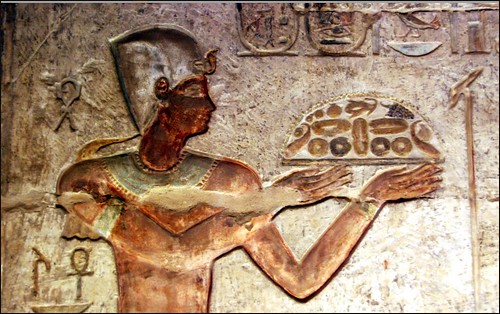
Comentários
Djedhuti  disse:
disse:
Hi, I'm an admin for a group called Strictly Ptolemaic, and we'd love to have this added to the group!Ptolemy VI Philometor!!
Postado 9 meses atrás. ( permalink )
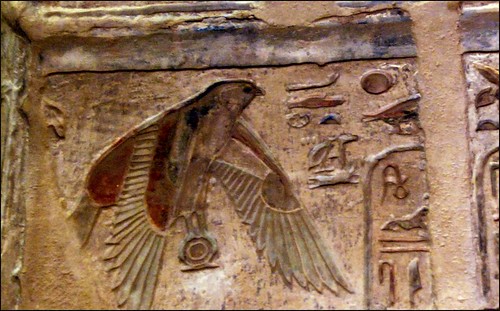
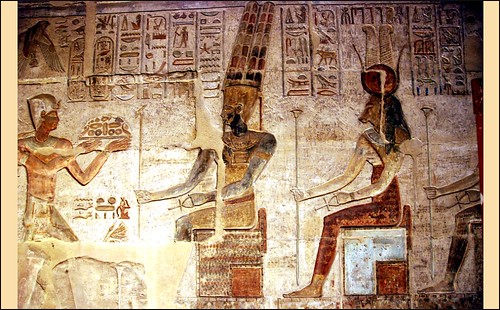
Comentários
Lenka P  disse:
disse:
This is also the southern wall of the Northern chapel. I love this. The king makes offering to Amun-Ra and the goddess sitting behind him is not Hathor but Iat. She is a goddess of milk. She was associated with the nursing of infants and also with their birth. She is not mentioned in texts very often so not much is known about her. Postado 14 meses atrás. ( permalink )
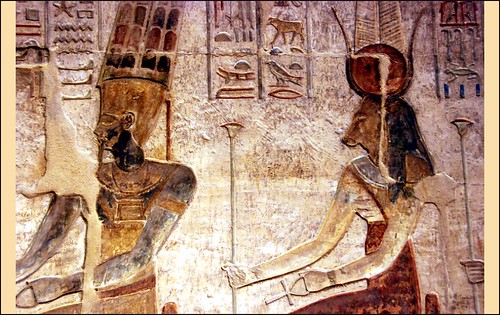
Comentários
Djedhuti  disse:
disse:
Hi, I'm an admin for a group called Strictly Ptolemaic, and we'd love to have this added to the group!
Postado 8 meses atrás. ( permalink )
arkeolog59 disse:
Group Archaeology
Please tag your photo:Group Archaeology
Archaeology image only!
Postado 8 meses atrás. ( permalink )
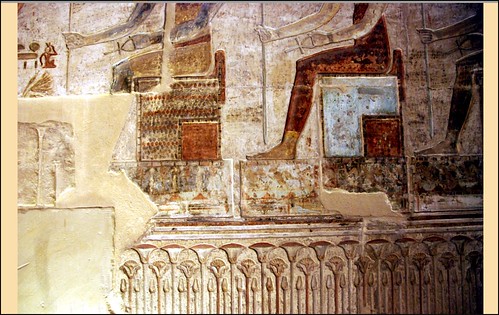
Queridos todos. Os envío un interesante enlace sobre la supuesta utilización, en el pasado, de los vendajes de las momias egipcias para hacer papel: http://blog.seattlepi.com/bookpatrol/archives/195111.asp?from=blog_last3
Un abrazo,
Mercedes González
Reality or urban legend: were the wrappings of ancient Egyptian corpses recycled and pulped to create so-called "mummy paper?" Archaeologists and other scholars have long debated the veracity of claims that mummies were imported into the U.S. in the mid-nineteenth century, stripped of their burial shrouds, and their bindings (largely composed of linen and other fibers such as papyrus and something akin to canvas) repurposed into printing paper. But, did this really happen? Are we being fleeced? Is this a fabricated tale? Can this yarn be unwound to get to the meat of the matter?
It wouldn't be the first time human remains have graced the Hay Library's stacks: included in its holdings are three examples of anthropodermic bibliopegy, that is, books bound in human skin. (Andreas Vesalius's anatomy text, "De Humani Corpis Fabrica," and two editions of the folktale "Dance of Death," the skinny epidermises a result of 19th Century rebindings by private collectors.)
Richard Noble, a rare book cataloger at the Hay, answered an online inquiry from Wolfe seeking to find a fiber of truth to the story that mummies were indeed transplanted to the US in the mid-1800's, specifically, to use their high-quality wrappings as pulp material for manufacturing rag paper. (The actual corpora delicti, along with their sarcophagi and other personal effects, becoming just so much collateral impedimenta.)
Wolfe and Noble point to the so-called "Norwich Broadside," in the Hay Library as their supporting evidence that ancient mummified corpse wrappings were indeed the raw material used by New England paper mills beginning in the 1850's, when the supply of European-imported rags began to dwindle. (At the time, America was producing more newspapers than any other county, and using a staggering 405,000,000 pounds of rags per year to manufacture paper.) This broadside is titled "Hymn: for the bi-centennial anniversary of the settlement of Norwich, Conn." [1859] and was printed on paper supplied by the Chelsea Manufacturing Company of Norwich, Connecticut. A notice, printed on the program, states that it was composed of material imported from Egypt, and taken directly from the ancient tombs where it had been used in embalming mummies. This document, says Wolfe, "was the key [until] we found supporting evidence." It is the first printed piece that actually documents using mummy wrappings for paper that she has come across in her research. There are only two copies of this broadside currently known to exist: the one at Brown University and another at the Connecticut Historical Society.

Wolfe has since uncovered the existence of 1850's New England paper mills that manufactured paper from mummy wrappings. The mummies were unspooled and their linen rags were washed before being processed, she says. "This whole 19th-century attitude is incomprehensible to us we're so into preservation now." Some mummies were even "hacked at with axes and knives" by these Yankee corpse-grinders in order to separate the linen wrappings from the mortal remains.
In the mid-nineteenth century, Egyptomania was still rampant, so putting together paper manufacturing and top of the line linen harvested from ancient cadavers would sew up a good portion of the market, and, it was hoped, on the cheap. An early example, perhaps, of respecting the environment: trees no longer need to lose their lives for almighty paper. What were once skin wraps became fodder for the rag trade.
In civilian life, Wolfe is a senior cataloger and serials specialist at the American Antiquarian Society in Worcester, Mass. But she really loves her mummies. Wolfe is currently compiling a comprehensive database of all Egyptian mummies and mummy disarticulations that remain in the U.S. Thus far, Wolfe says she has some 1,250 entries, representing about 550 individuals.
Each entry in the database is cataloged according to 25 categories, including the sex of the mummy, when he/she was first imported into the U.S., and the repository where the remains are housed. Wolfe says she hopes to post the completed database on the the Internet. This labor of love has been especially difficult: "Because I'm not affiliated with a university or a doctoral program, it has been hard to get information." Prior to her own investigation, scant research had been done in documenting the transmigration of cadavers from ancient Egypt to the new world.
------------
http://www.facebook.com/inbox/?tid=419036555075#/pages/Instituto-de-Estudios-Cientificos-en-Momias/140490073140?ref=ts
http://www.youtube.com/watch?v=XN-_kiI7aZ4&feature=related
http://www.youtube.com/watch?v=dwnNWvtggdA
##########################################
RSS Feed de Amigos de la Egiptología
http://www.egiptologia.com/index.php?format=feed&TYPE=rss
##########################################
Todo sobre Tutankhamon
http://www.egiptologia.com/todo-sobre-tutankhamon.html
Recomendamos: Arqueología
http://www.arqueologos.org
--------------------------------------------------------------
LISTA DE DISTRIBUCIÓN DE AMIGOS DE LA EGIPTOLOGÍA - AE
Gestión Altas-Bajas y consulta mensajes enviados:
http://www.egiptologia.com/lista-de-distribucion.html
Moderador: Víctor Rivas egiptologia@egiptologia.com
Amigos de la Egiptología: http://www.egiptologia.com
Los mensajes de Amigos de la Egiptología son distribuidos gracias al apoyo y colaboración técnica de RedIRIS Red Académica Española - http://www.rediris.es



Lenka P disse:
disse:
Southern wall of the Northern chapel. Ptolemy VII Philometor makes an offering here. Look at all those goodies!
Postado 14 meses atrás. ( permalink )